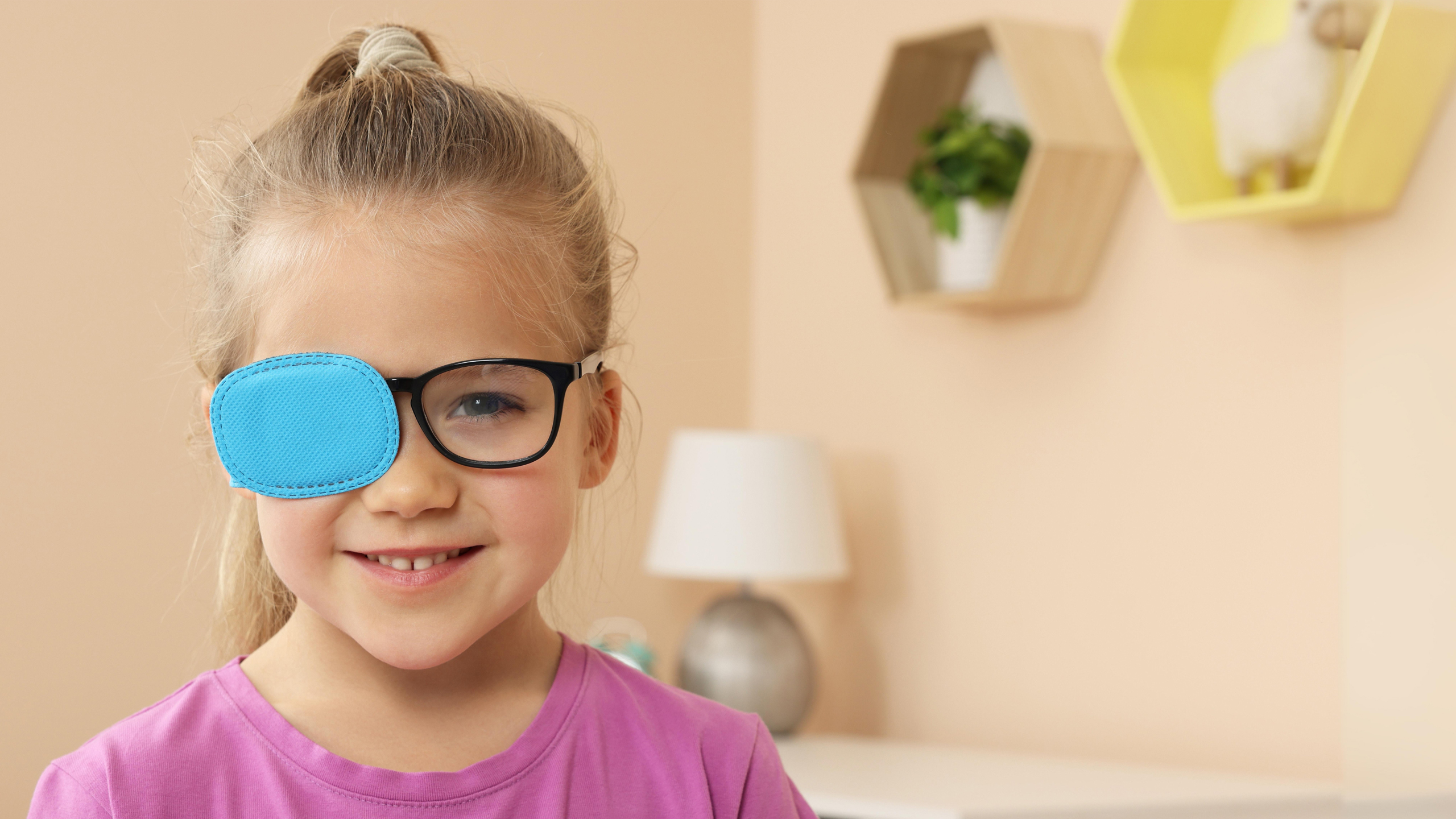Prescription sunglasses offer children the perfect combination of vision correction and UV protection during the summer.
⏱️ 02:20 READING TIME
Summer is the perfect time for children to spend more time outdoors, enjoying the sun and summer activities. However, prolonged exposure to UV rays can be harmful to the eyes, especially for the sensitive eyes of children. Glasses with vision correction and sun protection are an excellent solution to combine visual correction with UV protection. In this article, we will explore how to choose glasses with vision correction and sun protection for children, focusing on the benefits of photochromic and polarized lenses.
Importance of UV Protection for Children’s Eyes
Children’s eyes are more sensitive to UV damage than those of adults. This is because the crystalline lens, which helps filter light, is more transparent in children, allowing more UV rays to reach the retina. Inadequate protection can lead to long-term problems such as cataracts and macular degeneration.
How to Choose the Right Frame
Choosing the right frame is crucial to ensure comfort and protection. Here are some aspects to consider:
- Lightweight and Resilient Materials: Opt for materials like acetate, which is robust, durable, and impact-resistant. It also comes in a wide range of colors and designs. It is perfect for active children who need durable and stylish glasses. Alternatively, TR90 or silicone, which are lightweight and flexible, are ideal for children’s daily activities, although less resistant.
- Wraparound Design: Frames with a wraparound design offer better coverage, protecting the eyes from UV rays coming from all directions.
- Fit and Comfort: Ensure that the glasses fit well on the child’s face without slipping, thanks to adjustable nose pads and flexible temples.

Photochromic Lenses: Benefits and Function
Photochromic lenses, also known as transition lenses, automatically adapt to lighting conditions. They darken in sunlight and become clear indoors. This continuous adaptation offers numerous benefits. First, they provide constant UV protection, eliminating the need to switch glasses when moving from indoors to outdoors. They are also comfortable and practical for active children who frequently move between indoor and outdoor environments, reducing visual fatigue and improving comfort during outdoor activities.
Polarized Lenses: Protection and Visual Clarity
Polarized lenses are another excellent option for protecting children’s eyes from UV rays. These lenses block reflections of sunlight on surfaces like water and asphalt, improving visibility and contrast. By eliminating reflections, polarized lenses make it easier for children to see clearly in bright conditions. They offer sharper and more contrasted vision, useful for activities like outdoor reading and sports. Additionally, like photochromic lenses, they provide complete protection from UVA and UVB rays.
Making Glasses Enjoyable for Children
Getting children to wear glasses can be challenging. Involving them in the selection of the design and color of the glasses can make them more excited to wear them. Explaining the importance of glasses and their benefits can motivate them to wear them regularly. It is also essential to ensure that the glasses are comfortable and do not cause irritation, as well-fitted frames are crucial for children’s acceptance.
Conclusion
Choosing glasses with vision correction and sun protection for children is essential to ensure both visual correction and protection from sun damage. Photochromic and polarized lenses, although more expensive than classic glasses, offer effective solutions to protect children’s eyes in any situation. Ensuring that children wear suitable and high-quality glasses will help keep their eyes healthy and protected during the summer and beyond.
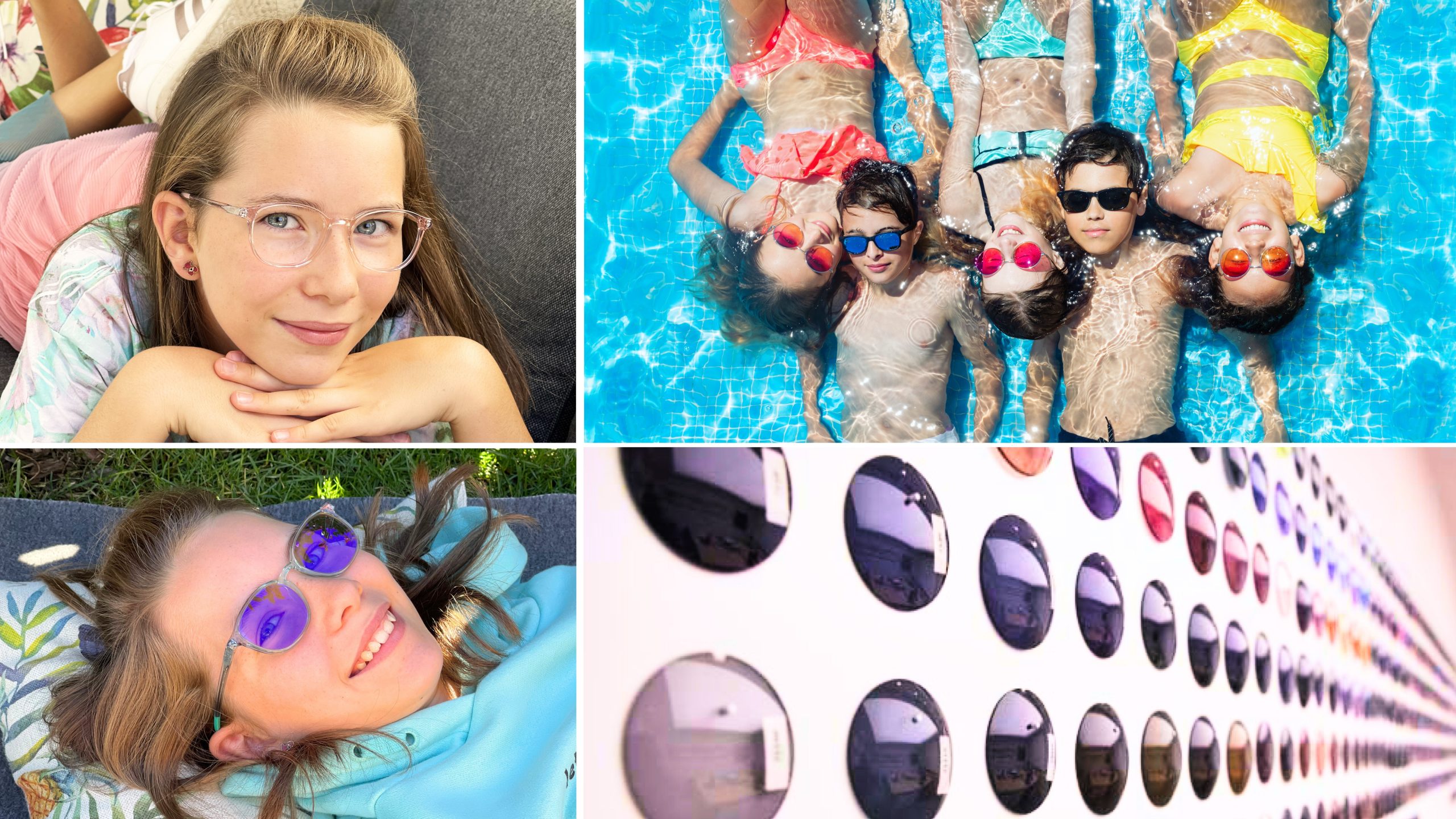
How to tackle children’s OCULAR ALLERGIES and ensure them a spring season (and not only) without discomfort!
⏱️ 02:35 READING TIME
Spring brings an explosion of colors and the joy of fresh air, but for children with eye allergies, it can also mean discomfort and irritation. This is a critical time of year when many children experience the annoying symptoms of eye allergies for the first time. About two out of ten children suffer from allergic reactions during spring and summer, often accompanied by conjunctivitis and eye inflammations.
Symptoms to Keep an Eye On
Ocular allergies in children can manifest with a range of symptoms that can be really bothersome. Here are the most common signs:
1. Itchy Eyes. Children tend to rub their eyes frequently due to intense itching, often worsening the situation.
2. Redness. Eyes may appear visibly red and irritated, usually due to inflammation caused by the allergen on the conjunctiva.
3. Excessive tearing or ocular secretions. Children with ocular allergies may have watery eyes or clear secretions (different, however, from those typical of infections).
4. Burning in the eyes.
5. Swelling of the eyelidsle. Occurs due to inflammation and irritation and due to unconditioned rubbing of hands on the eyes.
6. Photophobia – increased sensitivity to light that can be perceived in bright environments.
7. Blurred vision caused by tearing or irritation..
8. Congestion and nasal symptoms
Often, ocular allergies in children are accompanied by nasal symptoms such as sneezing, congestion, or itching in the nose, as the upper airways are connected to the eyes, also disturbing sleep and making the child even more restless.

Insights into Ocular Allergies Causes
Ocular allergies in children occur when their immune system overreacts to normally harmless substances, mistakenly identifying them as threats. This can be due to hypersensitivity of the immune system or genetic predisposition.
The Keyword: Prevention
If the child presents these symptoms, it is important to consult a pediatrician or an allergist for an accurate diagnosis and appropriate treatment. In the meantime, there are some measures that can be taken to prevent the onset of allergic discomfort.
Among the most important are: correct identification of the responsible allergens, consultation with a specialized doctor such as a pediatrician or allergist for appropriate treatments, reduction of exposure to allergens by keeping windows closed during periods of high pollen concentration, and teaching children to wash their hands frequently. It’s also crucial to maintain good eye hygiene and avoid external triggering factors during pollen peaks.
How to Reduce Ocular Allergies Symptoms
Before administering medication or invasive products, it’s essential to consult with the pediatrician or allergist who will provide precise instructions on which product to use and how. In the meantime, we can encourage young children in their behaviors (not to rub their eyes, not to go out at certain times, to wash their face often, etc.)
So when they are outdoors, let’s have them wear sunglasses that can protect them not only from harmful rays but also from excessive light that could cause a worsening of eye redness in case of allergies. Always carry with us artificial tears able to bring immediate relief to the eyes of children and teenagers and specific moist wipes for the correct hygiene of the eyes.
Upon returning home, we suggest a shower and a change of clothes to avoid bringing any allergens into clean areas.
Protecting our children’s eyes from allergies is essential to ensure them clear vision and safe contact with the world around them. As Helen Keller, the prodigious deaf-blind American writer and activist said, ‘Sight is the sense that communicates most with the outer world, and it is through it that the outer world communicates with us.’ With correct knowledge and attention, we can make spring a season of joy rather than concern for our children.
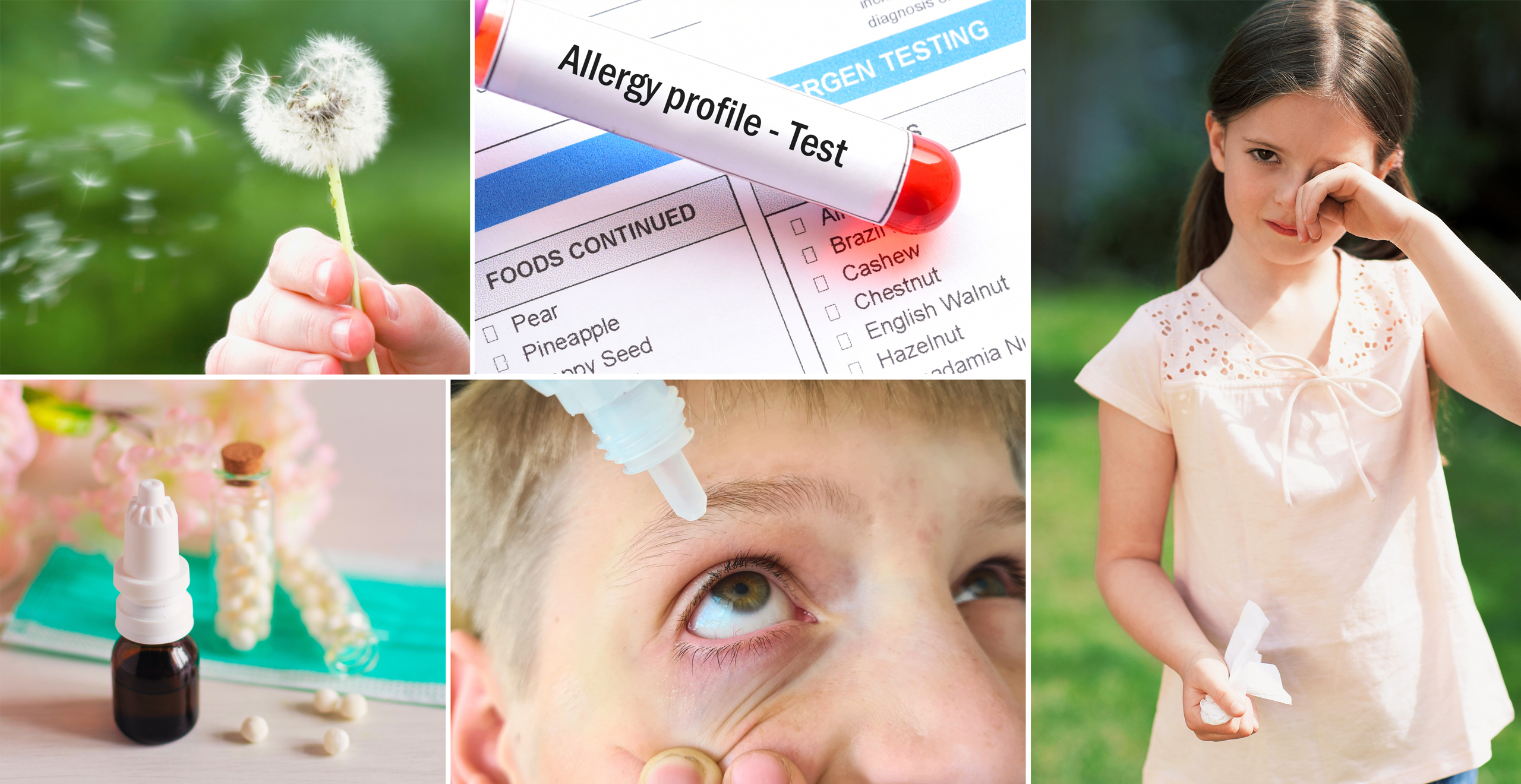
⏱️ 02:00 MIN. READING TIME
When the eyelid trembles, it indicates a condition called MYOKYMIA, characterized by a muscle contraction in either the lower or upper eyelid of one or both eyes (though having both eyes affected is rare). These ocular spasms are temporary and fade away as spontaneously as they appear. In rare cases or due to certain pathologies, this annoyance may persist for weeks or even months.
THE CAUSES OF MYOKYMIA:
STRESS: the most common cause. The body, like a sponge, absorbs and processes every tension, then turning it into tics, outbursts, insomnia, and more.
FATIGUE AND LACK OF SLEEP: Regularly losing hours of sleep promotes the onset of this minor annoyance.
EYE FATIGUE: we translate this into excessive use of computers, tablets, and other devices, as well as intense proximal work.
ABUSE OF CERTAIN SUBSTANCES SUCH AS ALCOHOL AND CAFFEINE or SMOKING, remember that these are exciting and stimulating substances for the body.
DRY EYE: This condition is very common after 50 years of age or due to the use of contact lenses, but it can also occur if exposed to a particularly polluted environment or if using drugs (as a subsequent contraindication).
NUTRITIONAL IMBALANCES: the first element among all is magnesium, if deficient it can lead to the manifestation of this trembling.
ALLERGIES: rubbing your eyes when they itch leads to the release of histamine in the eyelid tissues and tear film, promoting this discomfort.
MEDICATIONS: There are medications that induce myokymia as a side effect.
HEMIFACIAL SPASM: A non-dystonic condition that involves various muscles and causes irritation of the facial nerve.
Usually, this discomfort presents itself as an isolated event and remains as such, without arousing suspicion and without creating worries.
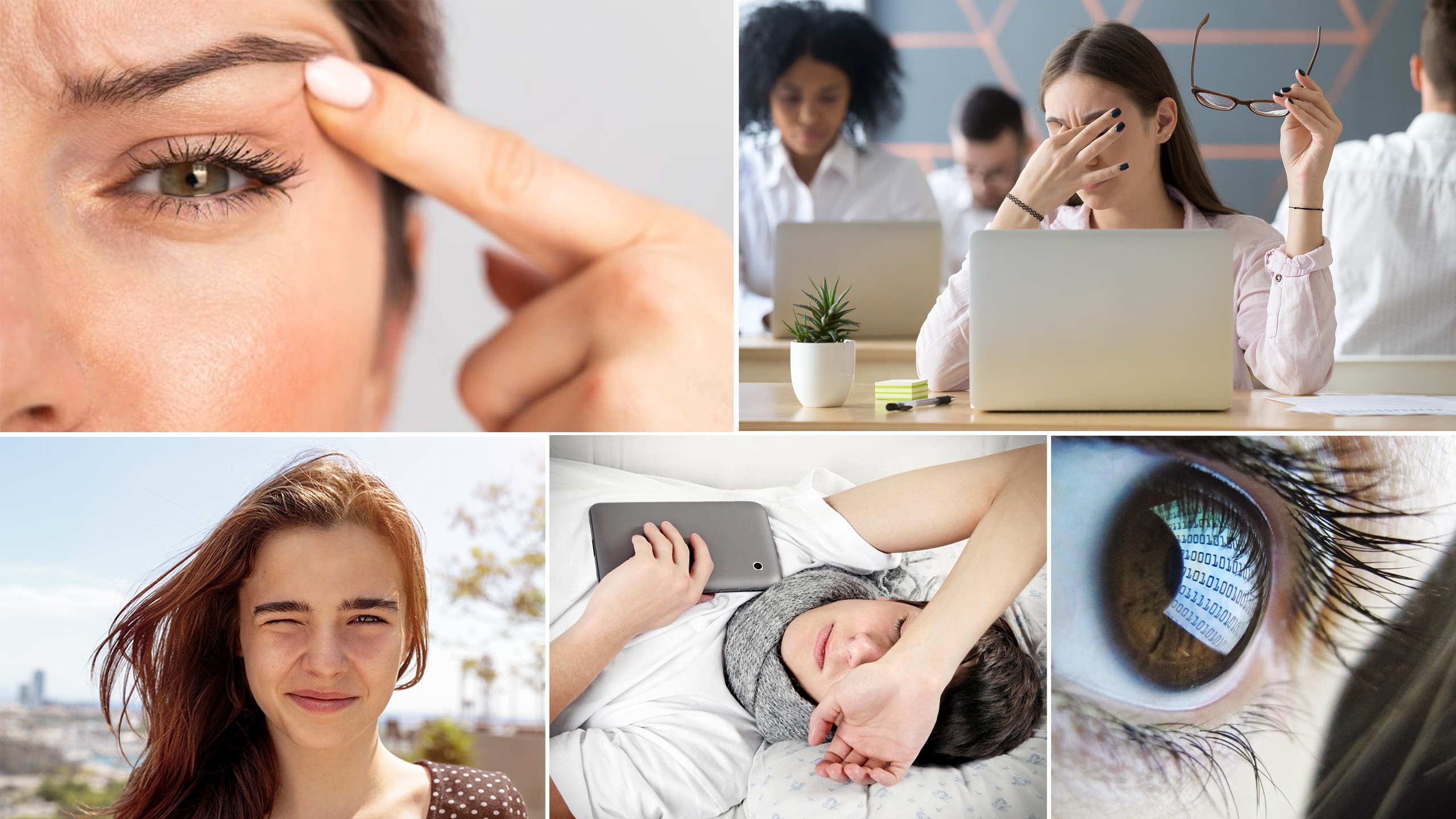
WHEN TO BE CONCERNED?!
Concern arises when the discomfort persists despite efforts to improve sleep, diet, and reducing intake of the aforementioned substances. If symptoms like red or painful eyes, changes in pupil appearance, or difficulty keeping the eye open due to involuntary closure occur, medical consultation is advised. Persistent tremors or sudden changes in facial appearance or movement also warrant a doctor’s visit to rule out serious conditions like glaucoma, blepharitis, corneal abrasion, uveitis, Tourette syndrome, Parkinson’s Disease, Dystonia, Bell’s Palsy, and Multiple Sclerosis. Electromyography and magnetic resonance imaging are commonly recommended diagnostic tests.
PREVENTION STRATEGIES:
- Reduce Stress: Engage in physical activities or hobbies that promote relaxation.
- Regular, Adequate Sleep: Ensure a sufficient amount of sleep to maintain overall health.
- Moderate Substance Use: Limit intake of alcohol, caffeine, and avoid smoking.
- Protect Your Eyes: Use blue light filtering glasses when using digital devices and ensure proper lighting and screen distance.
- Manage Dry Eyes: Use artificial tears to maintain optimal eye hydration.
For immediate relief, applying a warm damp towel on the eyes can help alleviate the discomfort. Drinking teas, herbal infusions, or chamomile can be relaxing and contribute to overall hydration, which is essential for eye health.
If myokymia persists, Botox injections may be considered as a treatment option, but this invasive approach should be determined and performed by a specialist.

⏱️ 03:05 READING TIME
Photokeratitis is an eye condition caused by ultraviolet (UV) rays, similar to those that cause tanning. This condition can affect children who love spending time outdoors and playing in the sun. Photokeratitis can be acute, appearing suddenly after significant sun exposure, or chronic, developing slowly due to frequent exposure. Although temporary and reversible, it can be very painful and bothersome. It’s crucial for parents to understand the causes, symptoms, preventive measures, and treatments to protect their children’s eyes.
Mechanism and Causes
Photokeratitis occurs when the cornea, the transparent part at the front of the eyes, is damaged by UV rays. These rays can come from the sun or special lamps like those used for tanning. If children spend too much time in the sun without protecting their eyes, UV rays can harm the cornea, just as the sun can burn the skin.
Symptoms
Symptoms of photokeratitis appear a few hours after sun exposure. The child may complain of severe eye pain, a sensation of having sand in the eyes, excessive tearing, red and sensitive eyes, blurred vision, and headaches. These symptoms can last from a few hours to a couple of days. Fortunately, photokeratitis is temporary and reversible, and with proper treatment, the symptoms disappear without causing permanent damage.

Chronic Photokeratitis
Chronic photokeratitis develops slowly when children’s eyes are frequently exposed to the sun without protection. This can happen to those who often play outdoors or engage in sports like skiing or swimming. Symptoms include constant irritation, dryness or a sandy sensation in the eyes, worsening vision, and increased light sensitivity. While chronic photokeratitis can be more challenging to treat, it is also temporary and reversible if the proper precautions and treatments are followed.
Prevention
Preventing photokeratitis is easy with some simple rules. It’s important to teach children to wear sunglasses that block UV rays whenever they go out in the sun. Using wide-brimmed hats to shade the eyes is another good habit. Limiting time spent in the sun during the hottest hours, from 10:00 AM to 4:00 PM, can make a big difference. Additionally, wearing protective goggles during activities like skiing, swimming, or using UV lamps is crucial.
Treatment
If we suspect our child may have photokeratitis, it’s important to take them to the doctor. However, there are some things we can do immediately to make them feel better:
- Rest the child’s eyes, avoiding intense light.
- Apply cold compresses to closed eyes to reduce pain.
- Use artificial tears to keep the eyes hydrated.
- Administer over-the-counter pain relievers to alleviate pain.
The doctor may also prescribe antibiotic or anti-inflammatory eye drops to prevent infections and reduce inflammation. Remember, photokeratitis is temporary and reversible, so following these tips can help resolve symptoms quickly and without long-term consequences.
Conclusion
Photokeratitis can be easily prevented with the right precautions. It’s important for parents to be aware of the risks associated with UV rays and protect their children’s eyes. Taking care of them today means avoiding problems in the future and ensuring good visual health. Always remember to protect your children’s eyes, especially during long sun exposures!

In-Depth Understanding and Treatment Strategies
⏱️ 03:15 READING TIME
What Is Childhood Strabismus?
Childhood strabismus, commonly known as “crossed eyes,” occurs when a child’s eyes do not align correctly, pointing in different directions. This condition can be due to the ongoing development of ocular muscles in young children, as well as a variety of other causes.
Common Causes of Strabismus in Children
The causes of strabismus can vary widely. In some cases, it is present from birth (congenital strabismus) and may be due to hereditary factors. Other causes may include muscle imbalances, neurological complications, or refractive problems such as hyperopia. In rare cases, strabismus may indicate more serious medical conditions.
Classification of Strabismus
Strabismus is primarily classified into four categories:
- Esotropia: where the eye deviates inward.
- Exotropia: characterized by an eye that deviates outward.
- Hypertropia: an eye that looks upward.
- Hypotropia: an eye directed downward.
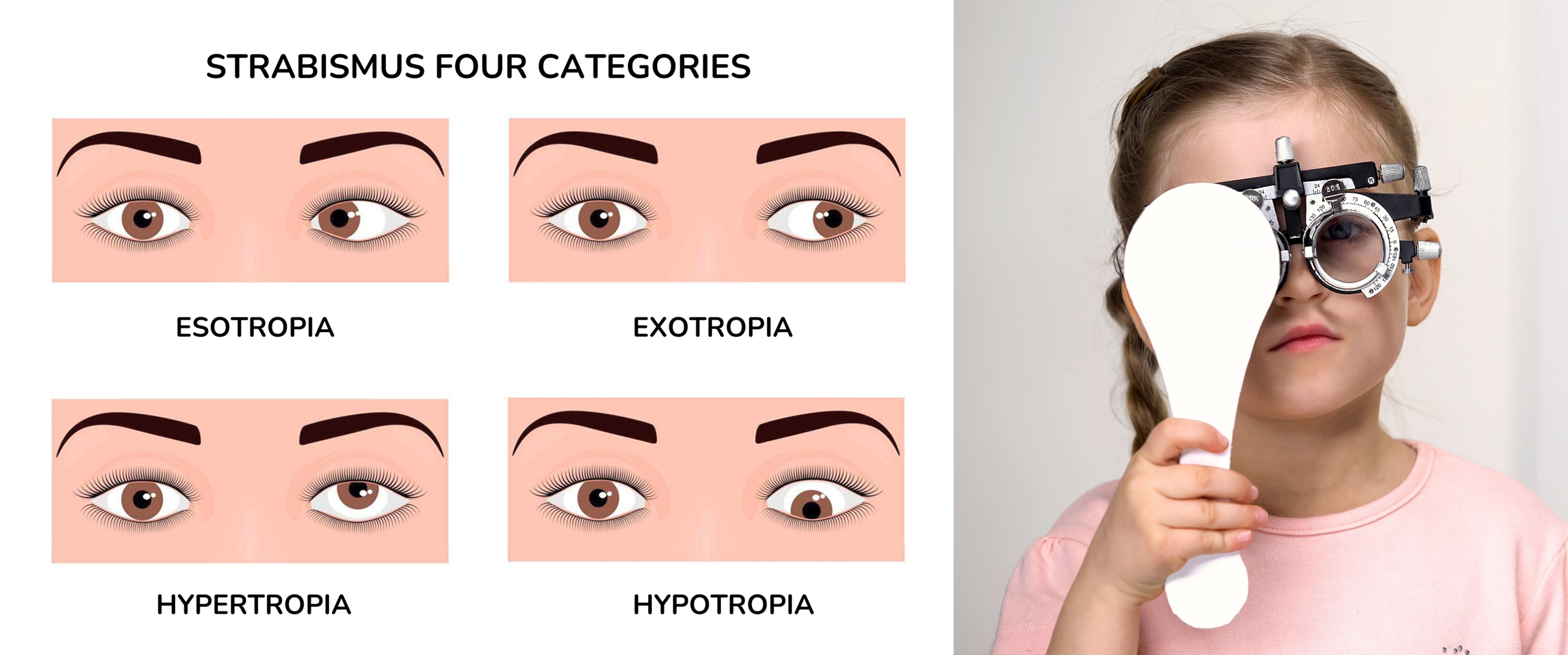
Symptoms and Signs to Observe
The symptoms of strabismus can vary. The most evident is the abnormal alignment of the eyes. Other symptoms include:
- Photophobia or sensitivity to light.
- Excessive blinking.
- Double vision (diplopia).
- Frequent tilting of the head to compensate for double vision.
- In more serious cases, dizziness and difficulty in orientation.
Treatment Options for Strabismus
- Corrective Glasses: Often used to correct underlying refractive problems.
- Patching or Occlusion: This technique involves covering the dominant eye to stimulate the use of the weaker eye.
- Orthoptic Exercises: This is a form of ocular physiotherapy aimed at improving coordination and muscle control of the eyes.
- Surgical Intervention: In more complex cases, surgery may be necessary to restore proper eye alignment.
The Role of Psychological and Social Support
Psychological support is essential for children with strabismus. It is important to reassure the child about the effectiveness of the therapies and maintain open communication with teachers and school staff to prevent bullying situations and promote an inclusive environment.
Conclusions
Timely and personalized treatment is essential to successfully address childhood strabismus. It is crucial for parents to recognize the signs of strabismus and immediately consult a pediatric ophthalmology specialist. With the right therapeutic approach and adequate psychological and social support, children with strabismus can achieve healthy visual and psychological development.
